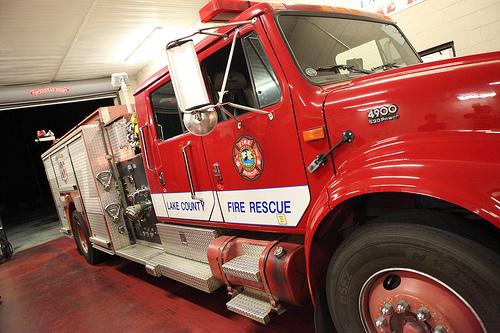As a shortage of volunteer firefighters and emergency medical technicians grips Wisconsin, a state Legislature special committee and University of Wisconsin students are working toward fillings gaps and providing services across larger areas.
The 2016 Legislative Council Study Committee on Volunteer Firefighter and Emergency Medical Technician Shortages proposed a resolution Feb. 1 to regionalize and combine different emergency services across the state. Doing so would be more cost effective and enable services to reach those in need more efficiently, Mike Mikalsen, chief of staff for Sen. Stephen Nass, R-Whitewater, said.
“Everybody wants to have their own control,” Mikalsen said. “It’s costly and there are not enough volunteers to serve community by community.”
Mikalsen said a lack of staff for these services is the biggest barrier to an efficient emergency response system. This leads to more missed calls, especially in rural areas. According to a 2015 Wisconsin Emergency Medical Services report, there were 746,338 statewide emergency calls but only 16,547 EMS personnel to receive them.
“While there were many licensed volunteers on the list, the number of people who responded to the call is much smaller,” Mikalsen said.
Fire departments also face problems. Data from the Department of Safety and Professional Services showed there are 832 registered fire departments in Wisconsin, including 40 career fire departments, 121 career and volunteer departments and 658 volunteer departments. Career fire departments only work with paid fire personnel.
According to the data, fire departments that have no paid staff for more than 36 hours weekly are classified as volunteer departments. In Wisconsin, 80 percent of fire departments fall into this category.
Mikalsen said the shortage of both fire and EMS volunteers varies across communities. Only metropolitan areas like Madison hire full-time firefighters.
Rural areas have the short end of the stick with the least amount of firefighters in general, Mikalsen said. These communities are also unlikely to be able to afford strictly full-time paid firefighters — they often have a mix of paid and volunteer members, or only volunteers.
But there are not enough volunteers to meet this demand, Mikalsen said.
To help combat this shortage, the University of Wisconsin Police Department works with UW students and prepares them to be volunteers for emergency services and the city fire department. UWPD spokesperson Marc Lovicott said this team of first responders is fully student-run and everyone trains just like any other emergency medical services volunteer.
Though they only work around Madison, these first responders play a key role in addressing the shortage of volunteers. UWPD First Responders works to provide on-site medical care across Madison and also during special events like game days, Lovicott said.
UWPD First Responders have partnered with Madison Fire and Rescue, UW Hospital and University Health Services to expand their services.
Larry Plumer, president of Wisconsin State Firefighters Association, said fire departments in northern Wisconsin also have a rough time recruiting volunteer firefighters. Barry Kuenkel, Cumberland Fire Department chief, said in a statement the rigorous training requirements and time demand turn most people away from becoming firefighters.
Though individual firefighters are not required to obtain a license before performing duties, they are required to go through 60 hours of training over three to four months. Local fire departments require additional training for one to two days each week, Mikalsen said.
EMS training takes six months to complete and is much more difficult to pass, Mikalsen said. High costs of equipment, training and maintaining personnel poses another challenge, Mikalsen said. Different parts of rural areas previously worked together to provide EMS but are no longer willing to do so. Moreover, fewer people opt to volunteer because of the stricter time requirements.
“The training never stops,” Mikalsen said. “That is one of the greatest stresses on volunteers.”
The Legislative Council Committee is currently examining the relationship between the rigorous training and the volunteer shortage and is working toward a resolution to address this. The committee has made recommendations to the Joint Legislative Council, which is deliberating on them.













